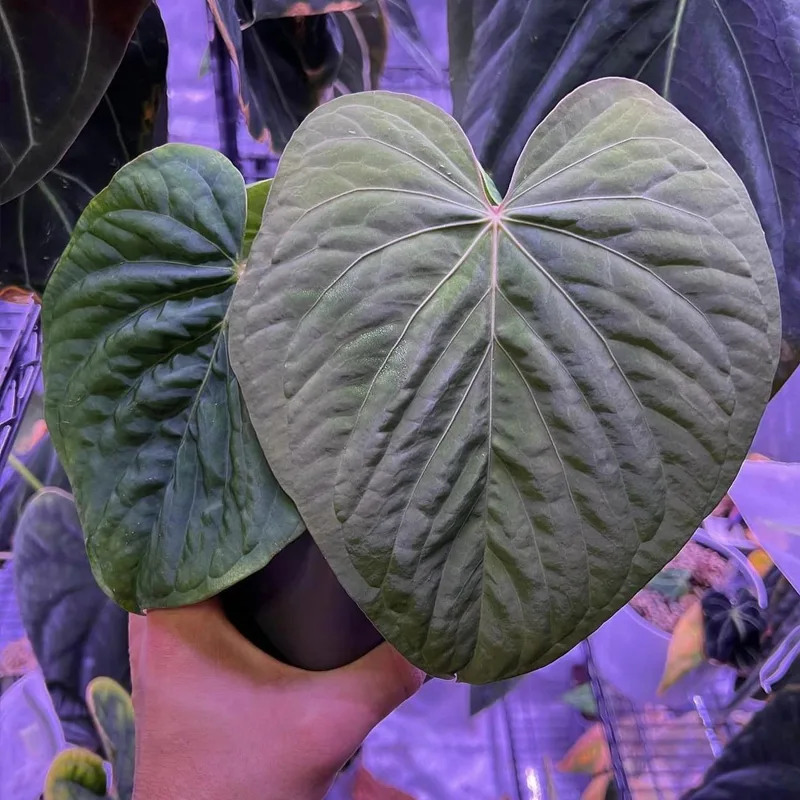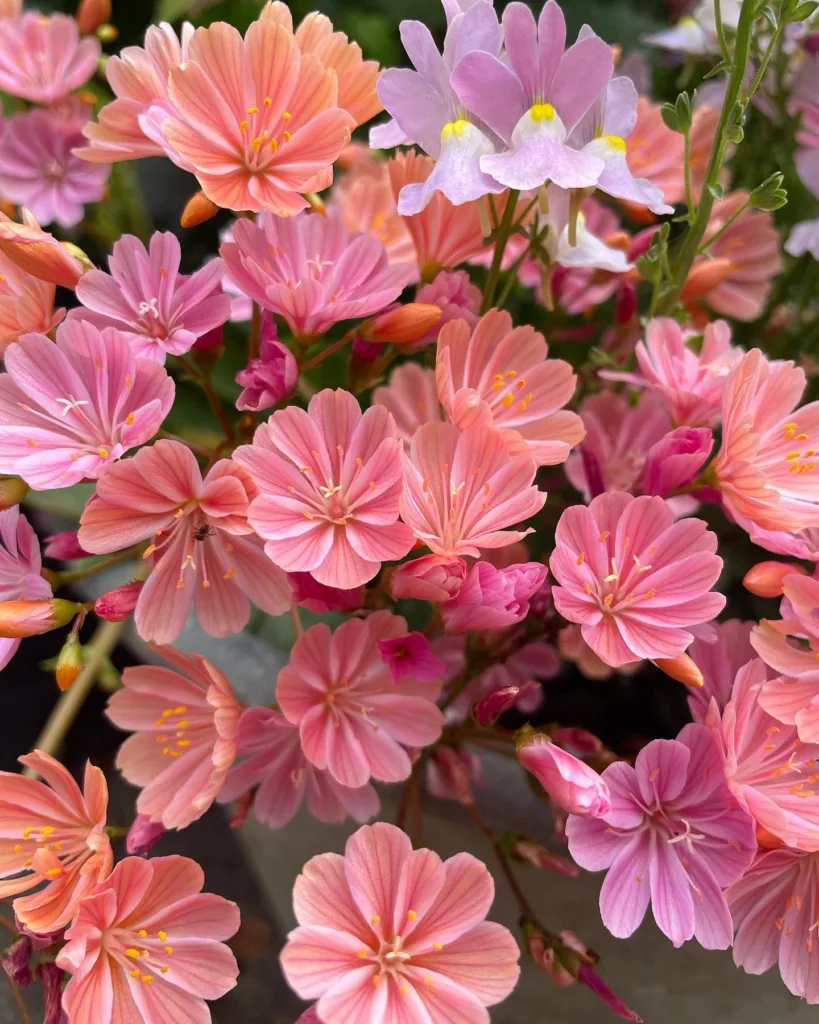
1. Introduction to Syngonium Milk Confetti: The Dappled Arrowhead
1.1. What is Syngonium podophyllum ‘Milk Confetti’?
The Syngonium podophyllum ‘Milk Confetti’, often simply called Syngonium Milk Confetti, is a highly prized and visually stunning cultivar of the Syngonium plant, also known as the Arrowhead Vine. What sets this variety apart is its unique and captivating variegation. Its leaves are typically a very pale green, almost white, and are adorned with delicate, irregular speckles and splashes of vibrant pink. This “confetti-like” patterning creates a whimsical and elegant appearance, making it a standout addition to any indoor plant collection. Like other Syngoniums, it is a vining plant that changes leaf shape as it matures.
1.2. Reasons for its Appeal
Syngonium Milk Confetti appeals to plant enthusiasts for several compelling reasons:
- Unique Variegation: The distinctive combination of pale green/white leaves with pink speckles is highly ornamental and adds a touch of sophistication and whimsy.
- Vining/Trailing Habit: It can be grown as a compact bushy plant or allowed to trail, making it versatile for various display options (e.g., hanging baskets, shelves).
- Relatively Easy Care: Despite its exotic appearance, it is generally considered a low-maintenance houseplant once its basic needs are met, making it suitable for a range of growers.
- Air Purifying Qualities: Like many houseplants, it contributes to improving indoor air quality.
2. Origins and Distinguishing Characteristics
2.1. Native Habitat
Syngonium podophyllum species are native to the tropical rainforests of Central America, including countries like Mexico, Costa Rica, and Panama. In their natural habitat, they grow as understory plants, often climbing trees and other vegetation to reach filtered light. They thrive in warm, highly humid conditions with rich, well-draining soil. Understanding these native conditions is crucial for successfully replicating an ideal environment indoors.
2.2. Leaf Morphology and Variegation
The leaves of Syngonium Milk Confetti are typically arrow-shaped (sagittate) when young, transitioning to more lobed or deeply divided forms as the plant matures. The most striking feature is its unique color palette: the base color of the leaves ranges from very light green to almost creamy white, generously sprinkled with irregular pink specks. The intensity and distribution of the pink variegation can vary from leaf to leaf, making each one a unique miniature work of art. This delicate variegation is what gives the plant its ‘Milk Confetti’ name.
2.3. Growth Habit and Rate
Syngonium Milk Confetti is a vining plant. When young, it grows in a more compact, bushy form. As it matures, it develops a trailing or climbing habit. It can produce long shoots, and if provided with a moss pole, trellis, or other support, it will readily climb, potentially leading to larger leaf sizes. Its growth rate is generally moderate to fast under optimal conditions, especially during the warmer growing seasons. Regular pruning can encourage a bushier growth habit.
2.4. Toxicity
Like other Syngonium varieties, Syngonium podophyllum ‘Milk Confetti’ is considered moderately toxic if ingested. It contains calcium oxalate crystals, which can cause irritation to the mouth, throat, and digestive tract, leading to symptoms such as swelling, burning sensation, and difficulty swallowing. It is advisable to keep this plant out of reach of pets and small children.
3. Comprehensive Care Guide: Nurturing Your Milk Confetti Syngonium
Cultivating a thriving Syngonium Milk Confetti involves providing consistent care that closely mimics its humid tropical origins, ensuring its vibrant health and unique variegation.
Table 1: Quick Care Guide for Syngonium Milk Confetti
| Care Factor | Requirement Description |
|---|---|
| Light | Bright, indirect light for best variegation. Tolerates medium light. Avoid direct sun. |
| Temperature | Ideal range: 18-29°C (65-85°F). Avoid drops below 10°C (50°F) or cold drafts. |
| Humidity | Prefers high humidity (50-60% or higher). Tolerates average home humidity. |
| Watering | Water when top 1-2 inches of soil is dry. Allow partial drying. Avoid overwatering. |
| Soil | Well-draining, airy, rich in organic matter (aroid mix, or potting mix + perlite + orchid bark + coco coir). |
| Fertilization | Balanced liquid fertilizer, diluted by half, monthly (or every 2-4 weeks) in spring/summer. Withhold in winter. |
| Pruning | Pinch tips for bushy growth, remove yellow/damaged leaves. |
| Repotting | Every 1-2 years, or when root-bound, in spring. Increase pot size slightly. |
3.1. Light Requirements
Syngonium Milk Confetti prefers bright, indirect light to maintain its vibrant variegation and promote healthy growth. Place your plant near a window that receives plenty of ambient light but is shielded from harsh direct sunbeams, especially during the midday hours. East or north-facing windows are often ideal. For south or west-facing windows, use a sheer curtain to diffuse intense light or place the plant a few feet away from the window. Direct sunlight can easily scorch its delicate leaves, causing the variegated parts to turn brown and crispy. While it can tolerate medium to lower light conditions, insufficient light will cause the pink variegation to fade, and the plant may become leggy as it stretches towards the light source.
3.2. Temperature and Humidity
As a tropical plant, Syngonium Milk Confetti prefers consistently warm temperatures, ideally ranging from 18-29°C (65-85°F). It is sensitive to cold, and temperatures below 10°C (50°F) can cause damage. It’s crucial to protect it from cold drafts (e.g., near open doors, windows, or air conditioning vents), as sudden temperature fluctuations can stress the plant and lead to leaf damage.
High humidity is beneficial for Syngonium Milk Confetti, ideally ranging from 50-60% or higher. While it can adapt to average household humidity, it will truly thrive with boosted moisture. Consider using a room humidifier, placing the pot on a pebble tray filled with water (ensuring the pot itself doesn’t sit in the water), or grouping the plant with other moisture-loving plants to create a more humid microclimate. Regular misting can offer temporary humidity, but a consistent source is preferred.
3.3. Watering Practices
Proper watering is critical for Syngonium Milk Confetti. It prefers its soil to be consistently moist but not waterlogged, and can tolerate short periods of drought. Water thoroughly when the top 1-2 inches of the soil feels dry to the touch (or when the top half of the soil is dry). Ensure that the pot has excellent drainage holes and that any excess water drains out completely from the bottom. Never allow the plant to sit in standing water, as this can quickly lead to root rot.
The frequency of watering will depend on environmental factors like light, temperature, and humidity, as well as the pot size and soil mix. Expect to water more often during the warmer, active growing months (spring and summer), potentially every 5-10 days. During the cooler, dormant months of fall and winter, reduce watering frequency significantly, allowing the soil to dry out more thoroughly between waterings (e.g., every 10-14 days).
3.4. Optimal Soil Mix and Repotting
A well-draining, airy, and nutrient-rich potting mix is essential for Syngonium Milk Confetti. This mimics the loose, organic matter it would find in its native environment. An ideal mix should promote good aeration while retaining sufficient moisture. A suitable blend, often referred to as an “aroid mix” or “chunky soil mix,” can include:
- High-quality indoor potting soil (e.g., 2 parts)
- Perlite or pumice (e.g., 1 part) to improve drainage and aeration
- Orchid bark (e.g., 1 part) for chunkiness and improved air circulation
- Coco coir or horticultural charcoal (optional, smaller amounts) for moisture retention and impurity absorption
Repotting: Repot your Syngonium Milk Confetti typically every 1-2 years, or when you notice it has become root-bound (roots growing out of drainage holes, water running straight through the pot too quickly, stunted growth). Spring is the best time to repot, as the plant is entering its active growth phase. Choose a new pot that is only 1-2 inches larger in diameter than the previous one, ensuring it has ample drainage.
3.5. Fertilization Strategies
During its active growing season (spring and summer), fertilize your Syngonium Milk Confetti monthly, or every 2-4 weeks, with a balanced liquid or water-soluble fertilizer formulated for houseplants. Dilute the fertilizer to half the recommended strength to prevent over-fertilization. This provides the necessary nutrients to support vigorous growth and maintain its vibrant variegation. Reduce or completely stop fertilizing during the fall and winter months when the plant’s growth naturally slows. Over-fertilization can lead to salt buildup in the soil, which can burn the roots and cause leaf damage (e.g., crispy brown tips). Always water the plant thoroughly before applying fertilizer to protect the roots.
3.6. Pruning and Maintenance
Regular pruning is beneficial for Syngonium Milk Confetti to maintain its shape, encourage bushier growth, and remove any unhealthy foliage. You can pinch off the growing tips to promote branching and a fuller appearance. Remove any yellowing, brown, or damaged leaves using clean, sharp scissors or pruning shears. Pruning can be done during the active growing season. For trailing plants, trim back vines to maintain desired length and density. Regularly wipe the leaves with a damp cloth to remove dust, which improves the plant’s ability to photosynthesize.
4. Propagation Techniques: Expanding Your Collection
Propagating Syngonium Milk Confetti is a straightforward and rewarding way to create new plants and expand your collection. The most common and effective method is using stem cuttings. The best time for propagation is during the spring or early summer when the plant is actively growing.
4.1. Stem Cuttings
- Select a Healthy Stem: Choose a healthy stem section that has at least one node (the bump on the stem where a leaf or aerial root emerges) and preferably one or two healthy leaves. If the plant has variegation, ensure the cutting includes both green and variegated sections to maintain the desired pattern in the new plant.
- Sterilize Tools: Always use clean, sharp, and sterilized pruning shears or a knife to make your cuts. Sterilizing prevents the spread of diseases.
- Make the Cut: Cut the stem just below a node. Remove any lower leaves that would be submerged in your chosen rooting medium to prevent rot.
- Rooting Hormone (Optional): Applying a rooting hormone (powder or gel) to the cut end can stimulate faster and more robust root development.
- Rooting Medium Options:
- Water Propagation: Place the cutting in a clear jar with fresh water, ensuring the node is fully submerged. Change the water every few days to keep it clean and prevent bacterial growth. Roots typically begin to form within 2-4 weeks.
- Sphagnum Moss: Plant the cutting in moist, but not soggy, sphagnum moss. This medium provides excellent aeration and moisture retention, often leading to robust root development.
- Soil: You can also plant the cutting directly into a small pot filled with a well-draining, airy potting mix. Keep the soil consistently moist but not soggy.
- Provide Optimal Environment: Place your cuttings in a warm location that receives bright, indirect light. High humidity (e.g., within a propagation box or covered with a clear plastic bag to create a mini-greenhouse effect) will significantly accelerate the rooting process.
- Potting Up: Once the roots are a few inches long (for water or moss propagation), or significant new leaf growth is visible (for soil propagation), your new plant is ready to be transitioned to a larger pot with its permanent potting mix.
5. Troubleshooting Common Issues: Pests, Diseases, and Environmental Stress
While generally resilient, Syngonium Milk Confetti can encounter a few common problems if its specific care requirements are not met. Prompt identification and action are crucial for maintaining its health.
Table 2: Common Problems & Troubleshooting for Syngonium Milk Confetti
| Problem | Symptoms | Solutions/Treatment |
|---|---|---|
| Yellowing Leaves | Older, lower leaves turning yellow. | Overwatering (most common), nutrient deficiency, natural aging. Adjust watering, fertilize, check roots for rot. |
| Brown Crispy Edges/Tips | Leaves browning and feeling crispy at edges. | Low humidity, underwatering, direct sun exposure. Increase humidity, adjust watering, move to indirect light. |
| Drooping Leaves | Leaves losing turgor, looking limp. | Underwatering (most common), severe overwatering (root rot), cold shock. Check soil moisture, inspect roots, ensure warmth. |
| Fading Variegation | Pink speckles or white areas become less prominent, leaves appear greener. | Insufficient bright indirect light. Move to a brighter spot. |
| Leggy Growth | Long stems with sparse leaves. | Insufficient light. Move to brighter location. Prune to encourage bushy growth. |
| Pest Infestations | Visible pests (mealybugs, spider mites), sticky residue, distorted growth. | Isolate plant, treat with insecticidal soap, neem oil, or appropriate pesticides. Increase humidity. |
| Root Rot | Mushy stem base, black/brown, foul-smelling roots, yellowing/wilting. | Overwatering, poor drainage. Repot, trim rotten roots, improve drainage, reduce watering. |
5.1. Watering Issues
- Overwatering: This is the most common cause of problems. Symptoms include yellowing leaves (particularly older, lower ones), black/brown spots on leaves, a mushy stem near the soil line, and a foul, moldy smell from the soil. This eventually leads to root rot.
- Solution: Allow the top 1-2 inches of soil to dry out completely between waterings. Ensure the pot has excellent drainage. If root rot is suspected, unpot the plant, trim any rotted, mushy roots, and repot in fresh, well-draining soil. Reduce watering frequency.
- Underwatering: Symptoms include drooping or wilting leaves, crispy brown edges or tips, and overall dull foliage. The plant may visibly droop when thirsty.
- Solution: Increase watering frequency. Ensure you are watering thoroughly so that water drains from the bottom of the pot, indicating the entire root ball has been moistened.
5.2. Light Issues
- Insufficient Light: Can lead to slower growth, smaller leaves, leggy stems (long gaps between leaves on the stem as it stretches for light), and a significant fading of the vibrant pink variegation.
- Solution: Move the plant to a location that receives brighter, indirect light. Consider supplementing with a grow light if natural light levels are consistently low.
- Too Much Direct Light: Harsh direct sun, especially during midday, can cause leaf scorch. Symptoms include brown, crispy patches or a faded appearance on the leaves, particularly on the more delicate variegated areas.
- Solution: Relocate the plant to a spot with filtered light, or use sheer curtains to diffuse intense sunlight.
5.3. Humidity and Temperature Stress
- Low Humidity: Often causes the leaf edges or tips to turn brown and crispy. New leaves might struggle to unfurl properly and could become distorted.
- Solution: Increase ambient humidity using a humidifier, pebble tray, or by grouping plants together.
- Cold Stress: Exposure to temperatures below 10°C (50°F) can severely stress the plant, leading to leaf damage, wilting, and overall decline.
- Solution: Ensure the plant is in a consistently warm environment and protected from cold drafts from windows or air vents.
5.4. Pests
Common houseplant pests like mealybugs and spider mites can occasionally infest Syngonium Milk Confetti. Syngoniums, in general, can be a bit more susceptible to spider mites than some other plants.
- Symptoms: Visible insects (white, cottony masses for mealybugs; tiny moving dots and fine webbing for spider mites), sticky residue (honeydew), or speckled, distorted leaves.
- Solution: Regularly inspect your plant, especially the undersides of leaves and stem crevices. Isolate infested plants immediately. Treat with appropriate organic pest control methods such as insecticidal soap, neem oil, or by wiping pests off with an alcohol-dipped cotton swab. Increasing humidity can help deter spider mites.
5.5. Root Rot
This is a serious fungal disease, almost always a result of overwatering and poorly draining soil.
- Symptoms: Yellowing, wilting leaves (even when the soil is wet), a mushy stem near the soil line, and black/brown, foul-smelling roots.
- Solution: Immediately remove the plant from its pot. Carefully inspect the roots and prune away all affected (mushy, black) sections with sterilized shears. Repot the plant in fresh, well-draining aroid mix, and adjust your watering schedule to allow the soil to dry adequately between waterings.
6. Conclusion: Enjoying Your Thriving Syngonium Milk Confetti
Syngonium Milk Confetti, with its vibrant, confetti-splashed foliage, is a truly delightful and rewarding plant to cultivate. By consistently providing it with bright, indirect light, appropriate watering, adequate humidity, stable warm temperatures, and a well-draining soil mix, you can ensure your Syngonium Milk Confetti thrives. While it benefits from attention to its specific needs, the reward of nurturing its unique beauty and watching its charming leaves unfurl will bring immense satisfaction and a whimsical touch to your indoor space.
If i die, water my plants!



